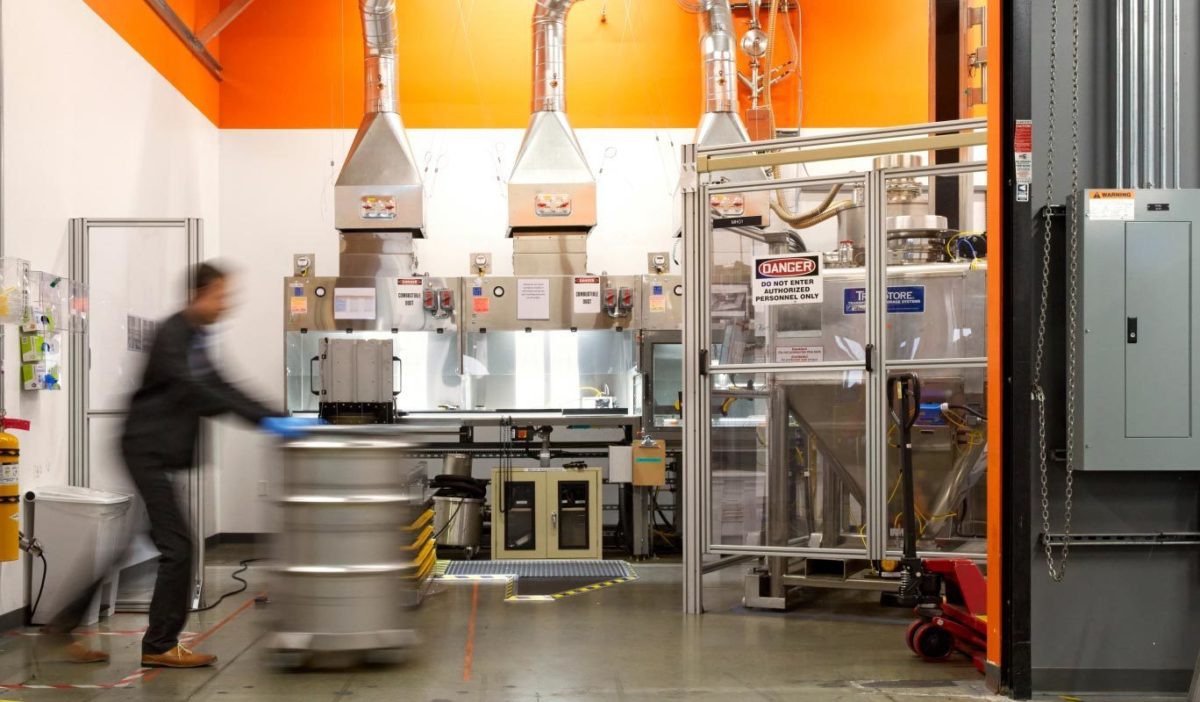Sila, a next-generation battery materials company specializing in advanced silicon anode materials, aims to provide energy storage as we move closer to the electrification of everything. The company began in 2011 as a Georgia Tech start-up, then in 2014 Sila moved to headquarters in Alameda, California where it began scaling its material. In 2019, after filing its 100th patent, Sila began a partnership with Daimler. Fast forward to today, and Sila announced the purchase of a hydro-powered 600,000 square foot facility in Moses Lake, Washington where the company will manufacture lithium-ion anode materials at automotive volumes and quality.
Sila reports that it is making its initial investment with the intention of delivering enough silicon-based anode annually to power 10 GWh of cells when used as a full graphite replacement, or up to 50 GWh of cells when used as a partial replacement. Or enough material to power batteries in up to 100,000-500,000 premium electric vehicles and 500 million mobile phones annually.
Gene Berdichevsky, co-founder & CEO, is a Tesla veteran. He was the seventh employee at Tesla Motors where he served as Principal Engineer on the Roadster battery, leading the development of the world’s first mass-produced, automotive lithium-ion battery system.
“Our new Washington state plant builds on that momentum offering the manufacturing capacity to meet the needs of our auto partners on their way to a fully electric future. We’ve been working towards automotive quality standards and scale since our start to ensure longer range, faster charge times, and lower battery cost. With this scale-up, we have a pivotal piece to realize the full potential of next-generation materials at the volumes required to make a global impact,” said Berdichevsky.
The Sila team has industrialized and made commercially available a next-generation lithium-ion chemistry with higher energy density. Sila will be producing the same materials at the Moses Lake facility to power electric vehicles, mobile phones and other consumer electronics. For example, Sila materials are powering the WHOOP 4.0 fitness tracker.
The plan is for production lines at the facility will start up in the second half of 2024, with full start of production underway in the first half of 2025. The Moses Lake facility can be expanded 15X to reach production volumes that could power 150 GWh of cells when used as a full graphite replacement or 750 GWh as a partial replacement, or enough to power 2 to 10 million electric vehicles per year.
“Our energy independence and economic prosperity are tied to our ability to develop and manufacture new clean energy technologies here on American soil. I’m proud that Washington state has been a leader on this issue and even prouder that innovative companies like Sila come here to advance these clean energy solutions. Washington is excited that Sila is investing here and we welcome the transformative impact that building clean energy can have on our world and our state,” said Washington Governor Jay Inslee.
Moses Lake is also home to the shuttered REC Silicon factory, now owned by Hanwha, which has voiced intentions to re-open the facility. BMW, in partnership with SGL Group, is the largest producer of carbon fiber in the world used in manufacturing electric vehicles, and is also manufactured in a Moses Lake facility.
Major Sila investors include 8VC, Bessemer Venture Partners, Canada Pension Plan Investment Board, Coatue, Mercedes-Benz, In-Q-Tel, Matrix Partners, Sutter Hill Ventures, and funds and accounts advised by T. Rowe Price Associates, Inc.
This content is protected by copyright and may not be reused. If you want to cooperate with us and would like to reuse some of our content, please contact: editors@pv-magazine.com.









By submitting this form you agree to pv magazine using your data for the purposes of publishing your comment.
Your personal data will only be disclosed or otherwise transmitted to third parties for the purposes of spam filtering or if this is necessary for technical maintenance of the website. Any other transfer to third parties will not take place unless this is justified on the basis of applicable data protection regulations or if pv magazine is legally obliged to do so.
You may revoke this consent at any time with effect for the future, in which case your personal data will be deleted immediately. Otherwise, your data will be deleted if pv magazine has processed your request or the purpose of data storage is fulfilled.
Further information on data privacy can be found in our Data Protection Policy.